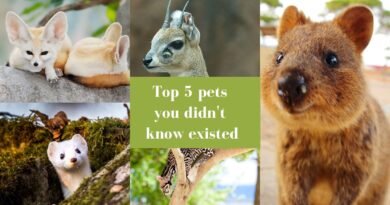The ultimate information about Komodo Dragons for you
What are Komodo Dragons? Are are Komodo dragon endangered? Komodo Dragons (also known as Komodo Monitors) are the world’s largest and heaviest lizards and a few with a poisonous bite. These cunning, powerful hunters use their long, forked tongues to sample the air for food, relying on their keen sense of smell. They can wait for a large meal to come within range for hours before unleashing a lethal attack with their massive, curved, and serrated teeth.
In this article, you will learn a lot about Komodo Dragon. So, do not keep waiting. Make sure you scroll through and read this article until the end. We promise; it will benefit you for all the right reasons. Want to know where do komodo dragon live? Read on and find out!
Physical appearance
Huge lizards with long tails, strong and agile necks, and robust limbs, Komodo Dragons are large lizards. They also have long tails, strong, and sturdy limbs. Their tongues are forked and golden. Adults have a nearly uniform stone hue with huge scales, while juveniles have brilliant color and pattern. Males grow larger and heavier than females, but there are no evident physical distinctions between the sexes. A small change in the arrangement of scales right in front of the cloaca is a modest hint.
The jaws and throat muscles of the Komodo allow it to swallow large quantities of meat with incredible speed. The intramandibular hinge, for example, is one of several moveable joints that opens the lower jaw abnormally wide. Their stomach swells easily, allowing adults to ingest up to 80% of their body weight in a single meal, which certainly explains exaggerated stories of enormous weights in captured people. When confronted, Komodos can throw up their stomach contents to reduce their weight and flee.
The Komodo Dragon’s habitat: where do Komodo dragon live?
For millions of years, Komodo Dragons have flourished in the tough climate of Indonesia’s Lesser Sunda Islands. They also favor the tropical forests of the islands, but they can be found all over. Despite their ability to walk up to seven miles each day, these athletic reptiles prefer to stay close to home, rarely venturing far from the valleys they hatched.

Reproduction
Female Komodo Dragons emit a fragrance in their excrement for males to follow once a year when they’re ready to mate. When a male dragon comes upon a female dragon, he strokes her back and kisses her entire body. They mate if she licks him back. Males will sometimes wrestle one another for the right to mate. Pregnant females then lay around 30 eggs, which they bury in the ground for eight months until they hatch.
Female Komodo Dragons have other ways of breeding when there aren’t any males around: Female dragons can spawn asexually in a process called parthenogenesis since they have both male and female sex chromosomes.
Lifespan
Komodo Dragons live for roughly 30 years in the wild, but scientists are still researching this.
Eating habits
Komodo Dragons will consume nearly anything, including Carrion, Deer, Pigs, lesser dragons, and even enormous Water Buffalo, as they are the dominating predators on the few islands where they live. Komodo Dragons use concealment and patience when hunting, lying in wait for passing prey. The dragon leaps into action when a victim approaches, eviscerating its prey with its keen claws and serrated, shark-like fangs.
Are Komodo dragon dangerous?
Are komodo dragon poisonous? Indeed they are, the venom glands of the Komodo Dragon contain poisons that reduce blood pressure, produce excessive bleeding, impede clotting, and cause shock. They are even considered a killer animal by some.
Serrated teeth bite down, and powerful neck muscles pull back, resulting in massive gaping wounds. The poison subsequently accelerates blood loss and puts the prey into shock.
Animals that manage to avoid a Komodo’s jaws will only feel fortunate for a short time. As the venom takes effect, dragons can track an escapee for kilometers, utilizing their excellent sense of smell to locate the corpse. A dragon may consume up to 80% of its body weight in a single meal. They are naturally deadly.
Extinction risk – Are komodo dragon endangered?
While asexual reproduction allows female Komodo Dragons to replenish their population, it comes with a severe disadvantage: this reproduction method only produces sons. There is evidence of inbreeding when there aren’t enough other females in a population. The reptile’s aversion to leaving its environment compounded the problem as the species’ population dwindled and fragments.
Humans have also put the Komodo Dragon’s survival in jeopardy so sadly, the answer to the golden “are komodo dragon endangered” question is a big yes. Poachers hunt the Komodo Dragon and its prey, and its habitat has been burnt to make way for other uses. Tourists also hand out food and interrupt the dragons’ mating process, prompting the Indonesian government to consider temporarily closing Komodo Island. On the other hand, tourists have to understand the cruciality of these conservational efforts because they offer people financial incentives to help safeguard the Komodo Dragon. As such, a lot can be done to secure this specie’s future in the long run.




We hope that this article has successfully helped you in acquiring information about the Komodo Dragon. If you think you need additional help in finding more info on exotic pets, please let us know!




